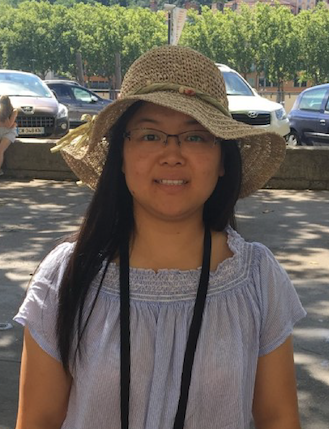Vita
Curriculum vitae
Since March 2021
Marie-Curie individual fellowship: Directed Evolution of Metalloenzymes through Electrochemical Droplet Microarrays.
Hosted by the Professorship of Electrobiotechnology at TUM Campus Straubing.December 2019 – February 2021
Postdoctoral position in Biophysics at the CNRS, LCPME (Laboratoire de Chimie Physique et Microbiologie pour les Matériaux et l’Environnement) – Nancy, France
Patent: BNT231138FR00, protected by the France ministry of defense, in process.January 2019 – February 2019
Postdoctoral position in Biochemistry at the CNRS IMM CapEnergies BIP (Bioénergétique et Ingénierie des Protéines) – Marseille, France.
September 2015 – December 2018
Ph.D. in Chemistry at the CNRS IMM CapEnergies BIP (Bioénergétique et Ingénierie des Protéines).
President’s Scholarship, Aix- Marseille University, Marseille, France.
Ph.D. thesis: ‘Biochemical and electrochemical studies of metalloproteins involved in oxygen reduction pathway in Acidithiobacillus ferrooxidans’.September 2014 – July 2015
The second year of graduate degree in Microbiology at the Paul Sabatier University, Toulouse, France, INSA (National Institute of Applied Science of France of Toulouse).
Master thesis: ‘Structure and Function Study of [FeFe] Hydrogenase in Clostridium acetobutylicum’.September 2013 – July 2014
The first year of graduate degree in Microbiology, Plant Biology and Biotechnology at the Science Faculty of University of Aix Marseille, France.
Selected Publication
- Wang, X. et al. Bacterial Respiratory Chain Diversity Reveals a Cytochrome c Oxidase Reducing O2 at Low Overpotentials. J. Am. Chem. Soc. 141, 11093–11102 (2019). https://doi.org/10.1021/jacs.9b03268
- Wang, X. et al. Electron transfer in an acidophilic bacterium: interaction between a diheme cytochrome and a cupredoxin. Chem. Sci. 9, 4879–4891 (2018). https://doi.org/10.1039/C8SC01615A
- Clément, R. et al. Mutations in the coordination spheres of T1 Cu affect Cu2+-activation of the laccase from Thermus thermophilus. Biochimie 182, 228–237 (2021). https://doi.org/10.1016/j.biochi.2021.01.006
- Feifel, S. C. et al. Dihemic c4-type cytochrome acting as a surrogate electron conduit: Artificially interconnecting a photosystem I supercomplex with electrodes. Electrochem. Commun. 91, 49–53 (2018). https://doi.org/10.1016/j.elecom.2018.05.006
- Roger, M. et al. Impact of copper ligand mutations on a cupredoxin with a green copper center. Biochim. Biophys. Acta BBA – Bioenerg. 1858, 351–359 (2017). https://doi.org/10.1016/j.bbabio.2017.02.007
- Mazurenko, I., Wang, X., Poulpiquet, A. de & Lojou, E. H2/O2 enzymatic fuel cells: from proof-of-concept to powerful devices. Sustain. Energy Fuels 1, 1475–1501 (2017). DOI https://doi.org/10.1039/C7SE00180K

